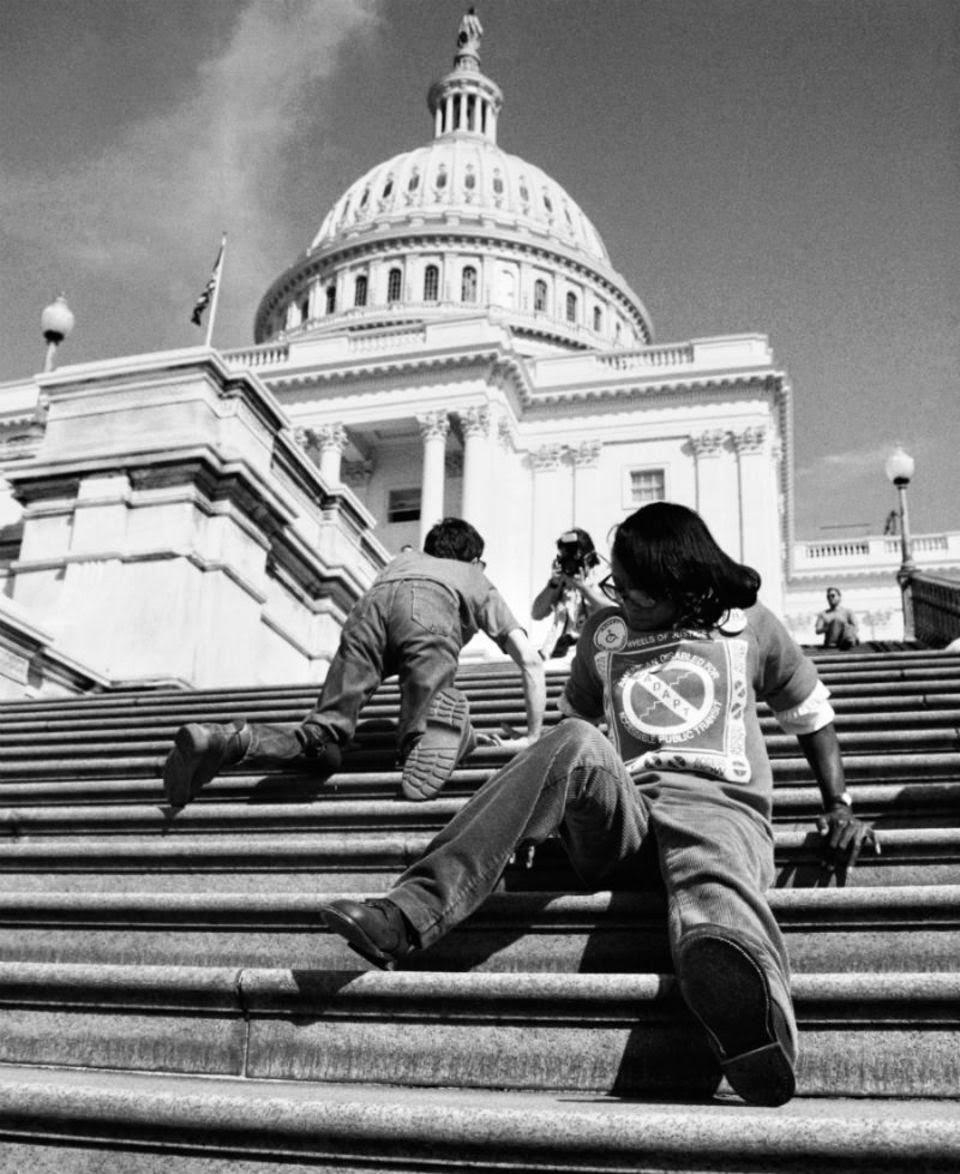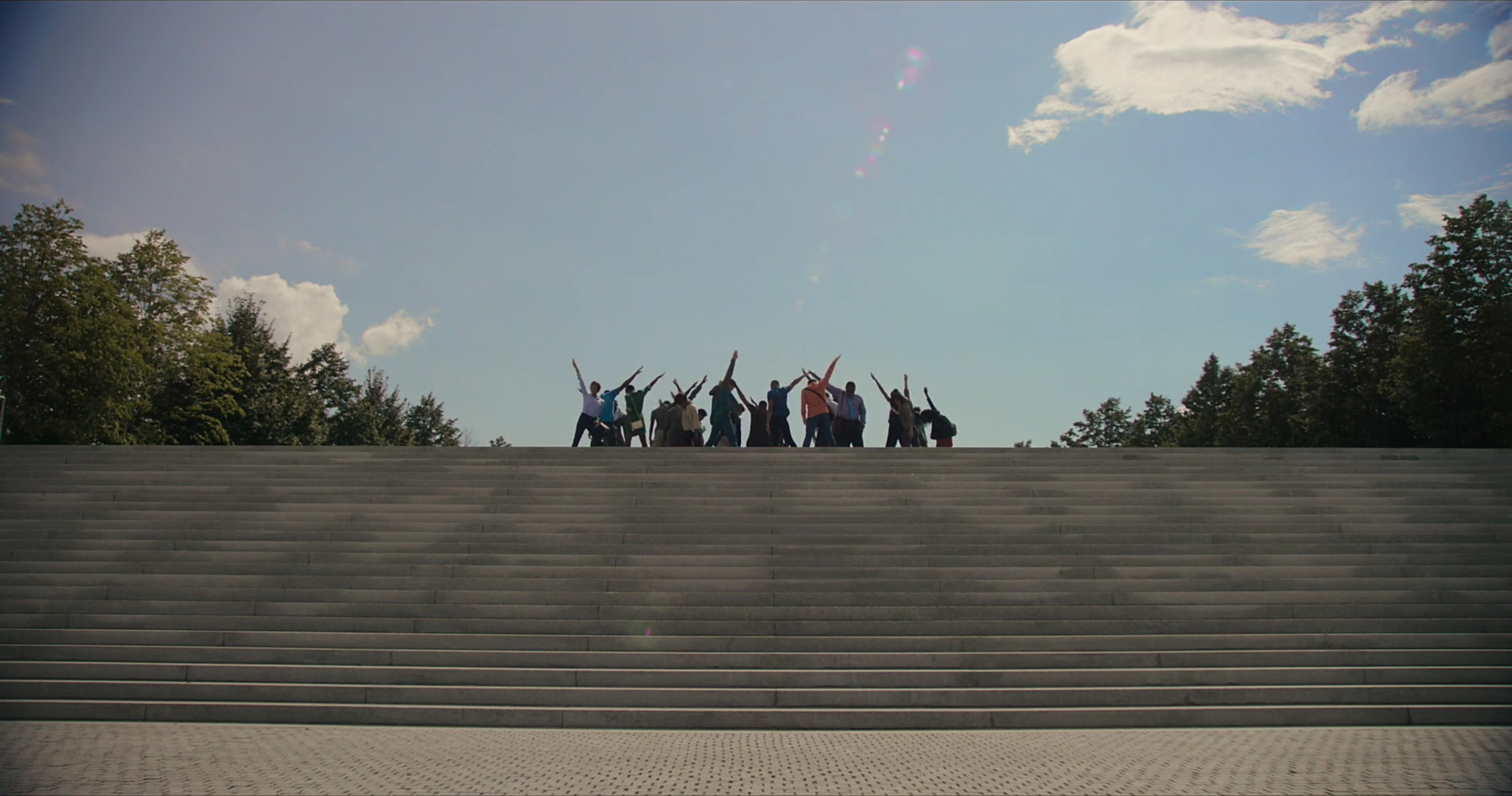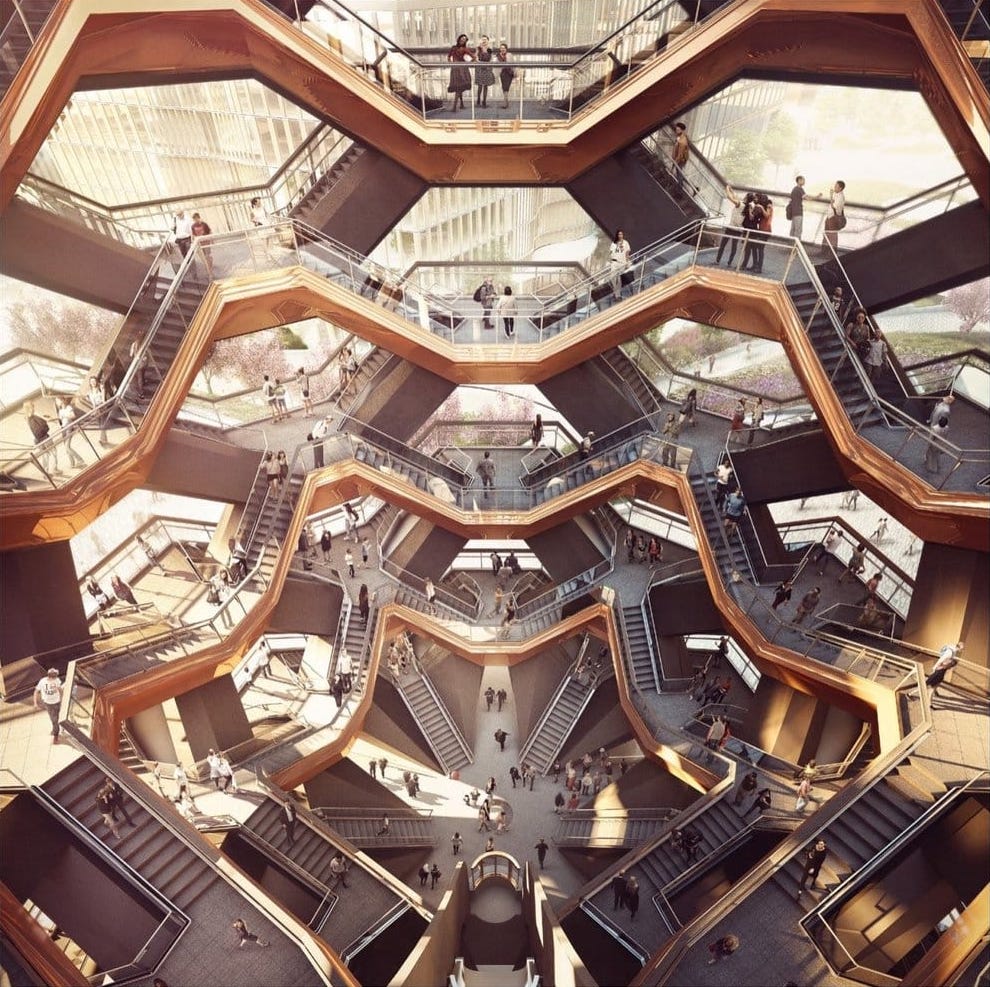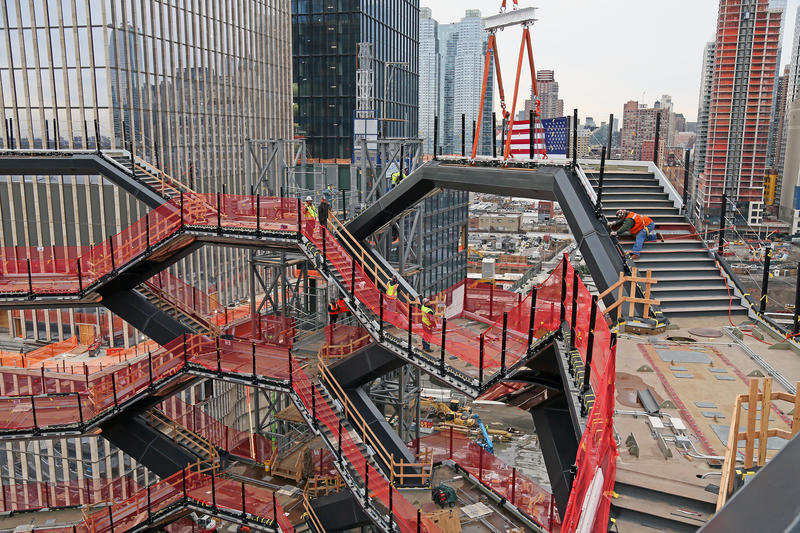The January 2018 report released by the New York City Mayoral Advisory Commission on City Art, Monuments, and Markers opens by resisting the idea that controversy around public art is anything new. If anything, a large part of the public outcry about monuments in late 2017 was that there wasn’t enough outcry before—that monuments constitute a certain intransigence-in-form and protect public commitments to inequity. “When enough time passes,” the Commission co-chairs wrote, “these cast bronze figures start to seem like a natural part of the scenery, the green patina blending with trees and moss.”1
Despite the quiet persistence with which monuments become part of the environment—and despite the spate of commissions, reports, and recommendations monumental controversies continue to engender—the discourse is often squarely representationalist. When Henri Lefebvre attempted to name the way hegemony makes use of the social production of space, he was proposing that imaginations of harmony and order are inscribed in “monumental space.”2 And yet he called this space a “collective mirror” of society (“more faithful than any personal one”), as if monuments naturally and perfectly react to public feeling. It seems that monumental mundanity produces something of a funhouse mirror instead. Beyond monuments, Lefebvre went on to take more interest in what he called the “spatial architectonics” involved in the space-making of quotidian activity—“buildings are to monuments,” he wrote, “as everyday life is to festival”—because he assumed monuments are defined by what they represent.3 But is it actually so easy to separate the texts in public space from a larger texture of public space?
The New York City Commission report recommends several options for addressing the statue of Theodore Roosevelt at the American Museum of Natural History. It notes that Roosevelt was an avowed eugenicist and that the Museum hosted the second and third International Eugenics Congress conferences in 1921 and 1932. Describing Roosevelt, on horseback, towering over two men who walk at his stirrups, it notes that “height is power in public art.”
But the report says nothing about the fact that the monument is on a set of stairs.
It says nothing about the other monument to the other President Roosevelt, also made inaccessible by a set of stairs. There is a telling absence of public concern about the fact that the Four Freedoms Park that points like an arrow to FDR’s bronze bust in New York City—the only memorial to the wheelchair-using president in his home state—is inaccessible to wheelchair users and others who used the same kinds of mobility aids he did at various points during his presidency.4
The Scaling of Justice
The passage of the Americans with Disabilities Act was spurred in part by a similarly mundane and monumental set of stairs. On March 12, 1990, hundreds of activists gathered in front of the White House to express their outrage about the slow progress of the first landmark omnibus disability rights legislation. It had passed in the Senate but was stuck in the House. The protesters marched to the Capitol, congregating at the base of eighty-two stairs leading up to the building. After speeches and chants, about three dozen activists, part of the organization called ADAPT, got out of their wheelchairs, put down their canes, and made their move toward the stairs.5

They climbed. And it wasn’t easy. Some nights before, as the action was being planned, several ADAPT members worried it would be demeaning to let nondisabled people see them struggle up the stairs. To others, this was exactly the point.6 The inaccessibility of a built environment designed only for people who take the stairs is exhausting. Reporters and photographers flanked the activists, covered in sweat and heaving.
The bill was signed into law months later.
These activists designed their protest using what is called the “social model of disability.” This model insists that disability is not an individual, medicalized situation but an active, collective process of sorting some bodies for exclusion. It dislodges disability from particular bodies and locates it within the built environment. And the social model’s ur-example is a set of stairs. It is not the use of a wheelchair that disables a person, the model proposes, but the steps at the front of a building.
The social model was a profound refutation of earlier conceptual statuses that had been given to disability. Historical anthropologist Henri-Jacques Stiker has argued that disability in Western twentieth-century history was dominated by newly available notions of replacement, substitution, and compensation. World War I activated rehabilitative contracts between the state and its disabled citizens in ways that in previous periods were mediated through models of divinity or charity. The social model upended them all: Disability isn’t actually about bodies at all—it’s about the societies that surround and course through them, which are themselves given shape fundamentally by the built environment. The social model identifies the monumentality of stairs as a collective climb that posits a certain upward transcendence. Stairs constitute the muscle memory of prototypical able-bodiedness.
It’s important to note, however, that this stair protest did not lead directly to justice. The Capitol Crawl of 1990 is perhaps the most notable event in disability rights, but its focus on legal and legislative change differs significantly from disability justice, a paradigm developed by queer and gender-nonconforming disabled people of color that imagines more radical and transformative framework.7 The Capitol Crawl activists used the stairs in part to call for the right to independence. Doing so, as disability scholar Hentyle Yapp has written, “appealed to an antiwelfare sentiment targeted against race, particularly blackness.”8 The ADA stoked a conservative anti-statist desire by seeking the right to work, thus cooperating with ways that welfare support is inequitably gendered and racialized.
Disability scholar Aimi Hamraie has also pointed to the limits of what seem like successes of the rights discourse: In architecture, universal design has been exalted to the point that it no longer acknowledges how central disability was to its formation.9 The idea that spaces could be designed for all bodies has also made universal design a field that often prizes its depoliticized nature. How to refuse stairs is no simple process.
Social Climbing
In the fall of 2016, a visual effects studio called The Mill was hired by the developer of New York City’s Hudson Yards to create a teaser film introducing Thomas Heatherwick’s Vessel to the public. The structure is the centerpiece of the Hudson Yards Public Square and Garden on the far west side of Manhattan. The film featured choreography by Matthew Rushing and the Alvin Ailey American Dance Theater—a piece called Rising.



The film is inspired by the “rhythm of a New York morning commute.”10 It opens with quick shots of a woman on a run, people moving up and down the stairs to an elevated subway line, and then many feet scaling various stairs. Three neighbors leave their brownstones at the same time. They glance at one another at the starting line and then hit their stride. Dancers arrive at the Hudson Yards subway station and work up the stage of the escalator. Outside, they gather at the base of yet another set of stairs where their bodies and outstretched arms form the shadow of the latticework of Vessel. The film ends as this silhouette of the structure fades into the rendering of the project.

Vessel is all stairs. Two thousand five hundred individual steps are built into 154 flights of stairs connected by eighty landings. They aren’t exactly stairways to nowhere—as an “exclamation point” on the north end of the High Line, Heatherwick imagines that the climb to various landings will offer visitors views of the Hudson and of one another.11 The diameter of 50 feet at the base expands over the structure’s sixteen stories up to a height of 150 feet at its mouth.
The teaser film suggests that Vessel is made not only for, but out of, the public body. As the centerpiece of the public square and gardens, it will be the only non-revenue-producing structure in a giant matrix of commercial and residential tenants. Vessel thus makes literal the private-public partnerships that comprise the body of the Hudson Yards Redevelopment Corporation. Stephen Ross’s Related Companies secured its land use from the Metropolitan Transportation Authority, who owns the air rights to the Yards, only after the city borrowed about $3 billion to extend the No. 7 line to the far west side,12 the city paid $267 million for capital improvements to the business district, and New York state added $25 million in incentives for BlackRock, the largest money manager in the world and one of the development’s commercial tenants.13
Related also raised about $600 million in construction funding from the EB-5, or Immigrant Investor Program, that confirms eligibility of a green card for foreign investors who can prove their investment in a commercial enterprise and maintain at least ten permanent jobs for US citizens. In order for the Hudson Yards development to qualify in the program, the map used to designate the “targeted employment area” wended upward through Harlem to include several large public housing complexes that qualify the region as a high-unemployment zone.14 As Nicole Lambrou has noted about Hudson Yards, strategies like these demonstrate the extent to which economic flows determine the capitalist ideology undergirding the image of the contemporary city. The byzantine boundary between public and private development is increasingly legible as the work of capitalism’s ideological wand. “The public space is one that you go to,” Lambrou writes, “to plug into the larger flow of investment, capital, and an image of urban lifestyle.”15
Stephen Ross handpicked Vessel as part of the public’s return on its investment, the part of the return that doesn’t include actual repayment to the city or state. And Heatherwick offers the city a literal manifestation of urban renewal as a rehabilitative process—a structure to make people sweat.
The project’s aesthetic of collective fitness is clearly tied to Heatherwick’s lifelong fascination with the climbing frame, or what Americans call the jungle gym. “New Yorkers have a fitness thing,” he’s said.16 And whether people perceive the jungle gym, Indian stepwells, or a honeycomb (the most common responses to what Ted Loos in the New York Times called “the city’s biggest Rorschach test”), there is a curiously uninterrogated association between the design and the salubrious quality of working and being out of breath.17 In its promotion, Ross has called it by its nickname: the social climber.18
Breathless Patriotism
Vessel is celebrated by declarations that it is “interactive,” though a more accurate understanding would have it as “anti-active”: limiting, by design, anyone whose body doesn’t easily climb stairs. Vessel is only interactive if you imagine one charmed visitor-figure: the young, bipedal, non-suicidal, stroller-less, luggage-less climber who cultivates a group of similarly embodied climbers for the trek. How does this categorical subject ascend so effortlessly?
The Hudson Yards development and American ideologies of ability grew together in the later twentieth century. “Ablenationalism” is what disability scholars name as the way that able-bodiedness is made to seem natural, unmarked, and intrinsic to the imagination of US citizenship and culture—and how a narrow set of disabled people have been selected for entry into global consumer culture in the name of inclusion.19 Disability imagined as a corroborating converse to notions of moral fitness allows inclusion to be measured through the limited notion of exception, thus maintaining existing injustices.
Disability developed within an emerging neoliberal order as Hudson Yards, too, reflected neoliberal imperatives. Proposals like a 1964 deal to build a sprawling middle-income complex for twelve thousand families were stalled and repeatedly tabled in the face of the complexity of managing the necessary private-public financing partnerships.20 Rankling administration after administration, Hudson Yards started to feel like a challenging climb.
In the 1970s, marathons boomed in the United States. The number of entrants in the New York City Marathon surged roughly 10,000 percent between 1970 and 1981.21 It’s also in the 1970s when hundreds of “thru-hikers” began attempting the full length of the Appalachian Trail in a single effort, part of what sport historian Adam Berg calls the “new strenuosity” in American culture.22
And then there was the mosaic of community events that took up the marathon’s suffix during the dawn of the American nonprofit-industrial complex that found rituals of collective vigorous physical activity to be supremely useful charity fundraising tools: the Jerry Lewis Muscular Dystrophy Association Telethon saw viewership ratings higher than the Super Bowl23 and more than five combined nights of television’s most highly rated show of the time, Roots.24 The March of Dimes’ annual walkathons saw hundreds of thousands of participants in major cities, using incipient pledge and sponsorship fundraising models to cathect young marching bodies with the capacity to extract civic capital from their communities.
Sydney Pollack’s 1969 dance marathon drama, They Shoot Horses, Don’t They?, starred Jane Fonda as the depressive figure of endurance, ultimately murdered in supposed compassion by her partner. The film adaptation of Horace McCoy’s 1935 novel played as a suggestive, post-Vietnam existentialist echo of the 1930s Depression. On the other side of the decade, Fonda had pioneered an at-home VHS tape fitness boom with Jane Fonda’s Workout Book in 1981 and Jane Fonda’s Workout in VHS in 1982.
These developments in the 1970s were contemporaneous with the neoliberalism that determines America’s political, economic, and affective modes. The -thon-ification of the United States since the 1970s demonstrates the ways that American patriotism as a civic religion is undergirded by fantasies of physical autonomy and independence. The stairs are a site of American worship. Vessel tells this story of American able-nationalism in both content and form, and when it came time for the construction ritual of “topping out” of the structure in December 2017, the American flag affixed to the final piece of steel took on particular resonance. The project summited its own semantic and material ascendance.

What to Do with Missteps
Ironically, at the time of Vessel’s opening, New York City is also home to a burgeoning scene of disability arts, with artists that take up the category of non-normative physical and mental embodiments to produce game-changing artistic innovations. At a recent sold-out three-night run at New York Live Arts, the disability-centric dance company Kinetic Light used a large ramp to produce novel choreographic forms in wheeled movement. Park McArthur’s Passive Vibration Durometer Facts, recently on view at Essex Street on the Lower East Side, featured laminated rubber loading dock bumpers installed at a height of 48 inches above street level. Because the gallery’s main entrance opens onto a set of stairs that descends to the exhibition space, the height of the pieces calls attention to the ways that taking the stairs is often taken for granted for bipedal guests. McArthur’s investigation about the knowledge we can find in the materiality of accessibility—and an intricate erotics of the beatings it takes—includes depth and height as easily ignored categories.
Meanwhile, Heatherwick seems to treat the accessibility of Vessel with the woefully limited ruler of the ADA. There will be a glass elevator to transport visitors to the top, checking the box of the regulations but not honoring the spirit of the law. Bloomberg and several other news outlets reported in the fall of 2016 that only physically disabled visitors will be permitted to use it.25 Though disability determinations besiege federal and state bureaucracies, Heatherwick imagines these will be made at the entrance to the elevator, leaving visitors with strollers, luggage, and nonapparent disabilities without much certainty about their access to the structure.26
It’s tempting to cast Vessel close to its etymological roots: that which is, in the end, empty. It’s easy to refuse the claim that the vessel moves things, moving New Yorkers without moving itself. But in fact Vessel is quite full—with the imaginations that constitute ableism and with fantasies about who can and will inhabit public space. And it’s even easier to imagine that the structure will move New Yorkers to protest, filled with an array of vibrant cultural actors who take disability seriously.
-
Mayoral Advisory Commission on City Art, Monuments, and Markers, “Report to the City of New York,” January 2018, link. ↩
-
Henri Lefebvre, The Production of Space [1974], trans. Donald Nicholson-Smith (Cambridge, MA: Basil Blackwell, 1991), 220–222. ↩
-
Lefebvre, The Production of Space, 223. ↩
-
Perhaps the most memorable element about the monumentalizing of FDR is the relegated representation of his disability at his presidential memorial in Washington, D.C. A large cloak covers his chair in one statue, and another, more clearly showing wheels, was added four years after the memorial opened. ↩
-
Leonard Davis, Enabling Acts: The Hidden Story of How the Americans with Disabilities Act Gave the Largest US Minority Its Rights (Boston, MA: Beacon Press, 2015), 214. ↩
-
Michael Winters, “I Was There, Washington, D.C., 1990,” ADAPT, link. ↩
-
For more on this distinction, see Sins Invalid, Skin, Tooth, and Bone—The Basis of Our Movement is People: A Disability Justice Primer, 2016, link. ↩
-
Hentyle Yapp, “Disability as Exception: China, Race, and Human Rights,” American Quarterly. vol. 69, no. 3 (September 2017): 637. ↩
-
Aimi Hamraie, Building Access: Universal Design and the Politics of Disability (Minneapolis: University of Minnesota Press, 2017). ↩
-
“Behind the Project: Hudson Yards ‘Vessel’ Film,” The Mill, September 16, 2016, link. ↩
-
“Vessel, The Centerpiece of the Hudson Yards Public Square and Gardens, Tops Out Reaching Full Height,” Hudson Yards New York, December 6, 2017, link. ↩
-
Jim Dwyer, “Hudson Yards Offered a Payday for the Subway, but We Got Offices,” the New York Times, June 15, 2017, link. ↩
-
Greg David, “The Story of Hudson Yards Is Now the Story of New York,” Crain’s New York, June 4, 2018, link. ↩
-
Kriston Capps, “Inside EB-5, the Cash-for-Visas Program Luxury Developers Love,” CityLab, May 9, 2017, link. ↩
-
Nichole Lambrou, “Hudson Yards: A Sustainable Micropolis,” the Avery Review 22 (March 2017), link. ↩
-
Ted Loos, “A $150 Million Stairway to Nowhere on the Far West Side,” the New York Times, September 14, 2016, link. ↩
-
Loos, “A $150 Million Stairway to Nowhere.” ↩
-
Shawn Tully, “This Monument Could Be Manhattan’s Answer to the Eiffel Tower,” Fortune, September 14, 2016, link. ↩
-
David Mitchell and Sharon Snyder, The Biopolitics of Disability: Neoliberalism, Ablenationalism, and Peripheral Embodiment (Ann Arbor: University of Michigan Press, 2015). ↩
-
Robert E. Bedingfield, “US Steel Weighs Midtown Project,” the New York Times, August 1, 1964, 1, 34. ↩
-
Pamela Cooper, The American Marathon (Syracuse: Syracuse University Press, 1998), 141. ↩
-
Adam Berg, “‘To Conquer Myself’: The New Strenuosity and the Emergence of ‘Thru-hiking’ on the Appalachian Trail in the 1970s,” Journal of Sport History, vol. 42, no. 1 (Spring 2015): 1–19. ↩
-
“Jerry Lewis Labor Day Telethon—The First Eleven Years,” 1977 (New York: Muscular Dystrophy Association, Inc.), quoted in Lawrence Joseph Londino, “A Descriptive Analysis of ‘The Jerry Lewis Labor Day Telethon for Muscular Dystrophy” (doctoral dissertation, University of Michigan, 1978), 63. ↩
-
Telethon Topics, October 14, 1977 (New York: Muscular Dystrophy Association, Inc.), 2, quoted in Londino, “A Descriptive Analysis of ‘The Jerry Lewis Labor Day Telethon for Muscular Dystrophy,” 6. ↩
-
Katya Kazakina and David M. Levitt, “Related Unveils Design for Towering $150 Million ‘Vessel’ in Hudson Yards,” Bloomberg, September 14, 2016, link. ↩
-
(And then there’s another relationship to disability that Heatherwick seems not to have addressed: how the low railings will safely hold its climbers.) ↩
Kevin Gotkin is a visiting assistant professor in the Department of Media, Culture & Communication at New York University. In 2018, he completed his dissertation, “The Marathon and On: Disability, Endurance, Aspiration,” at the University of Pennsylvania. In 2016, he co-founded Disability/Arts/NYC (DANT) with Simi Linton.

